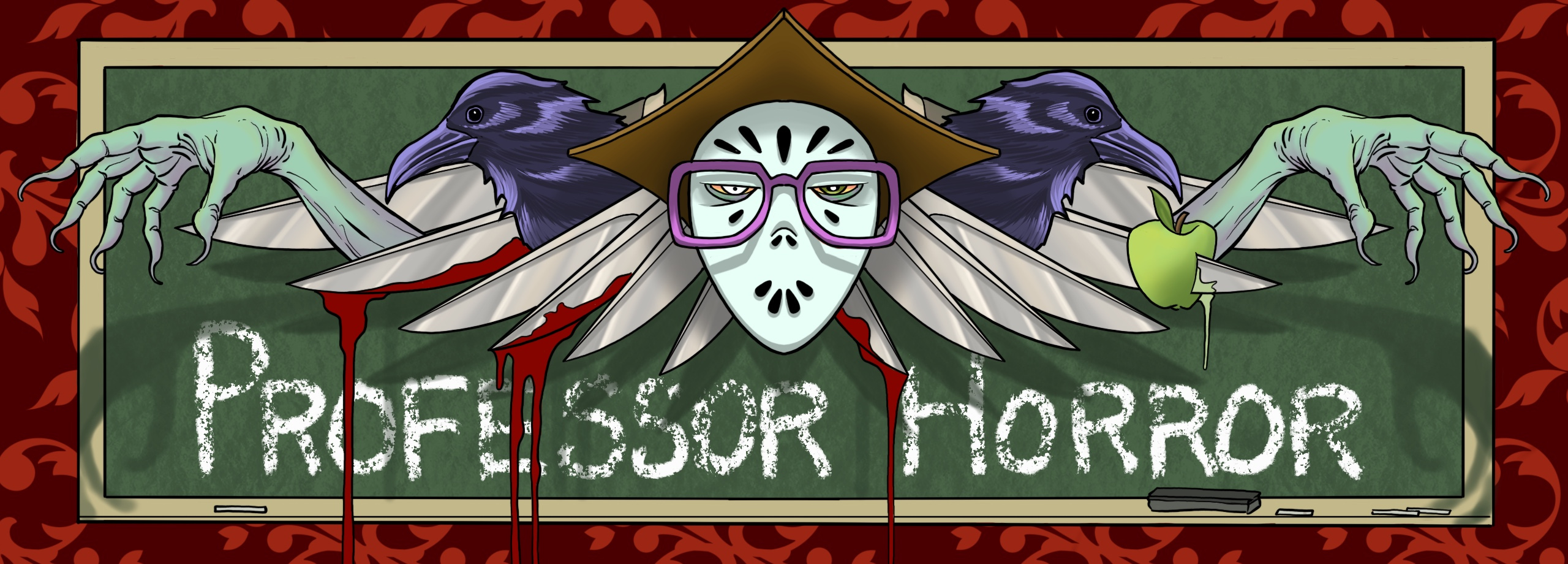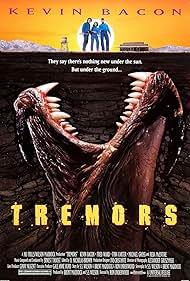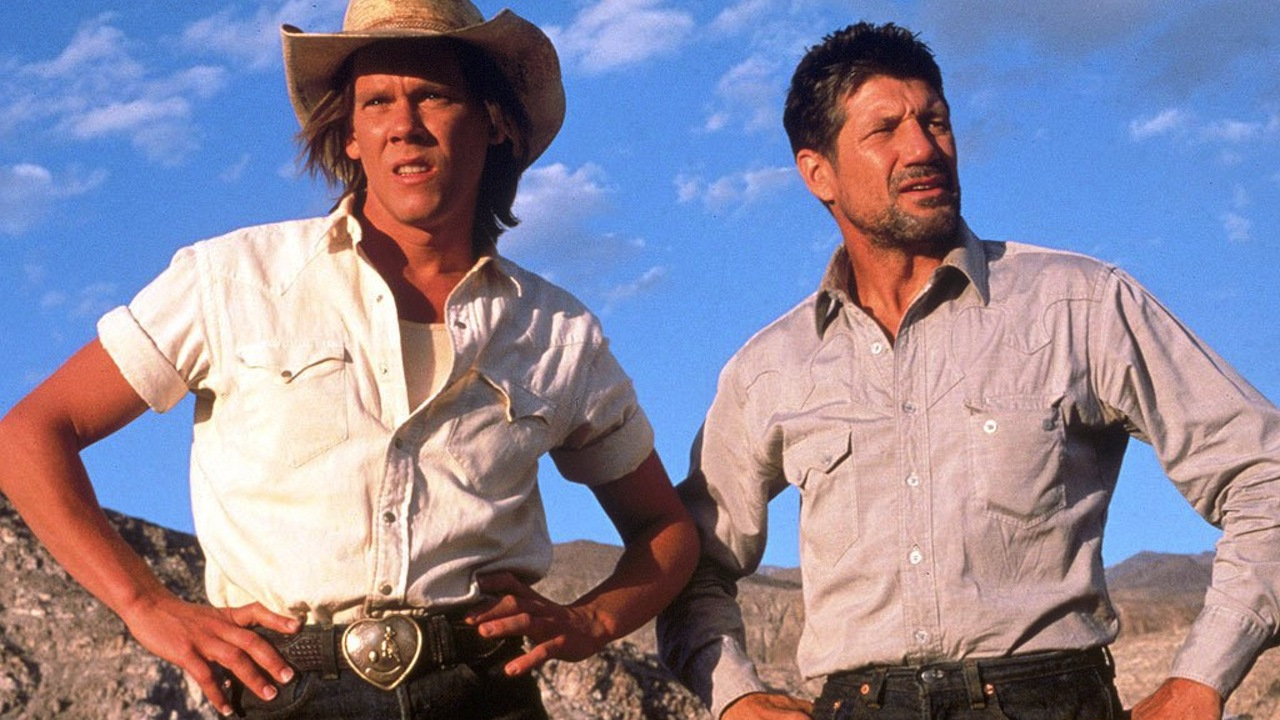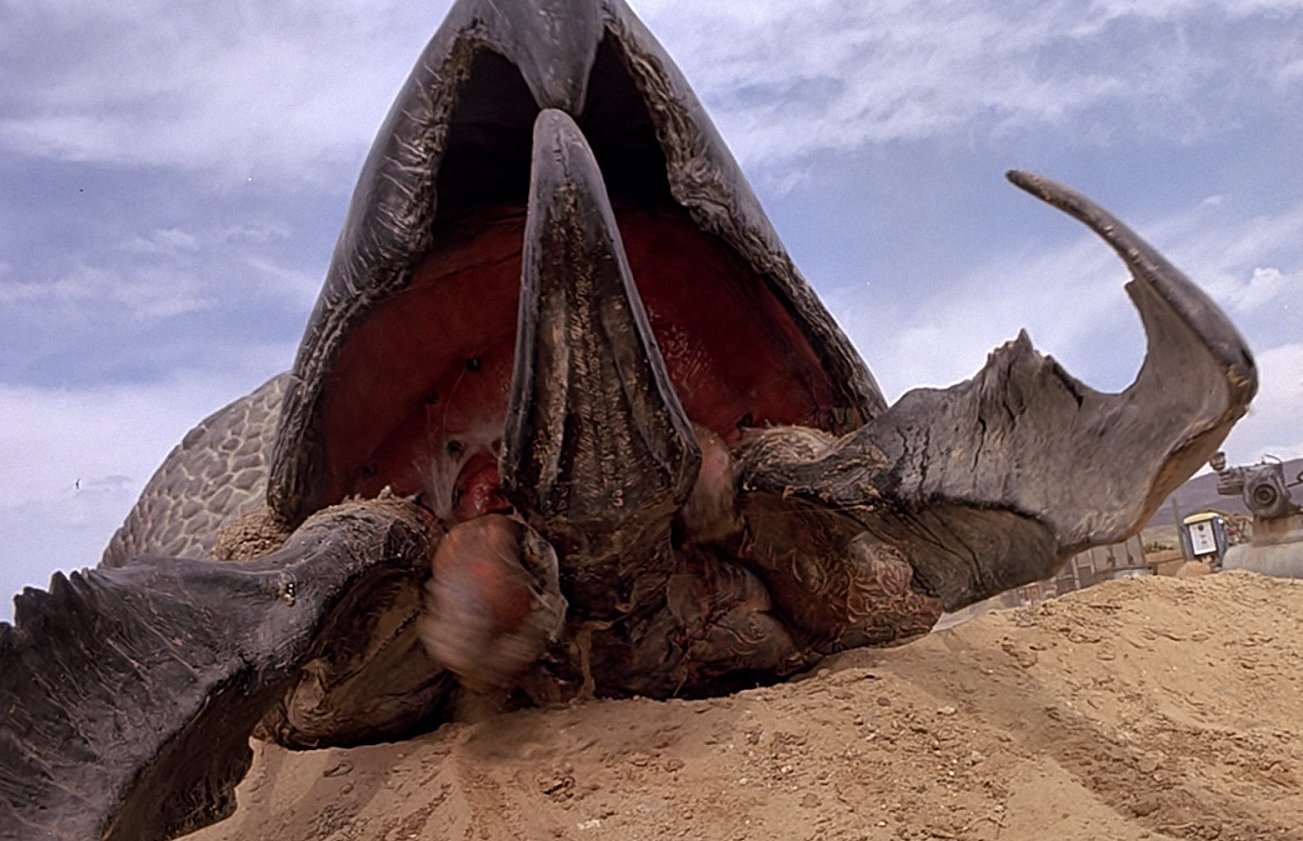
Where Horror Gets Studied, Skewered, and Celebrated.
Newest articles and reviews
The Graboids That Raised Us: TREMORS as Millennial Comfort Horror
By. Professor Horror

There’s a special kind of horror movie that doesn’t terrify so much as it tucks you in. The kind you can throw on during a lazy November afternoon when the Halloween adrenaline has worn off and you’re nursing your sugar crash with leftover Milky Ways. For me (and I suspect for many other millennials raised on basic cable reruns) that movie is TREMORS. Released in 1990, TREMORS somehow manages to be equal parts creature feature, western, and comedy without ever fully committing to any of them. It’s a mutant hybrid, much like its subterranean stars, the Graboids: giant worm-like monsters that tunnel through the Nevada desert to snack on anyone unlucky enough to make too much noise. But despite its toothy premise, TREMORS isn’t the kind of film that haunted me as a kid. It was the kind that made me fall in love with horror in the first place.
When you’re seven years old, PG-13 feels like an achievement. It’s that thrilling middle ground between Disney and danger as it gives the promise of seeing something “grown-up” without the actual risk of nightmares. TREMORS hit that perfect sweet spot. It was just scary enough to make me feel brave, but not so scary that I needed to sleep with the light on (a distinction Jaws failed to respect). The movie aired constantly on basic cable throughout the‘90s and early 2000s. TNT, Syfy, USA…take your pick. And every station, of course, ran it in those gloriously edited-for-TV versions where curse words were replaced with awkward dubs (“Broke in the wrong GALDARN wreck room didn't you, YOU BIG JERK!”), and the gore was snipped down to something that could survive a daytime broadcast. To my impressionable brain, this was cinematic rebellion. I wasn’t supposed to be watching horror, but here I was, channel-surfing my way into monster movie history (sanitized just enough to keep the foster parents off my back). It was the illusion of danger without the consequences. Comfort horror before I knew that term even existed.

Part of what made TREMORS so accessible (especially to a young viewer) was that its horror wasn’t human. The blood and guts were bright orange and while gross, still tame. When the Graboids burst through the earth, it wasn’t a slasher slicing into flesh, but it was rubbery, textured…alien. These weren’t the entrails of a victim, but they were the insides of a giant worm monster. The practical effects still hold up beautifully, too. Long before CGI flattened monsters into uncanny sludge, TREMORS relied on good old-fashioned puppetry, miniatures, and physical ingenuity. The Graboids looked real because they were real massive, slimy, cable-pulled animatronics heaving through mounds of desert dirt. Watching it now, you can see the craftsmanship in every shot. And there’s something deeply comforting in that…like seeing the seams in your favorite childhood blanket.
Another reason TREMORS never quite scared me the way it should have is because it’s bright. Like, blindingly bright. Most horror films thrive on shadow: the places where your imagination fills in the gaps. But TREMORS flips that idea on its head. Nearly the entire film takes place under the relentless Nevada sun, where every monster attack, every explosion, every Kevin Bacon one-liner happens in full view. Daylight horror does something strange to the psyche…it rewrites what fear looks like. Instead of the claustrophobic dread of nighttime terror, TREMORS gives us a desert filled with wide-open panic. The threat is visible, tangible, and yet oddly reassuring. You can see the monster, study it, outsmart it. And as a kid with an overactive imagination, that mattered. The movie didn’t feed my nightmares, but it disarmed them. If the monsters were already out in the open, then there was nothing left to fear in the dark.
Even the ending refuses to play by horror’s usual rules. No final-girl trauma, no sequel bait cliffhanger (well, at least not in 1990). Instead, we get a moment of triumph when Val (Kevin Bacon) finally mustering the courage to kiss Heather (Finn Carter) amid the dust and carnage. And to my seven-year-old self, that was the most disgusting part of the entire movie. Forget the exploding worms and splattered orange goo because the real horror was a heterosexual kiss. Ewwww. It’s funny now, but that moment says something about TREMORS’ tone. It’s a horror movie that treats survival as an adventure, not a trauma. Its characters are blue-collar heroes, its violence is oddly cheerful, and its love story is an afterthought so benign it might as well be a high-five. In other words, it’s the anti-Hereditary. You can rewatch it endlessly without feeling emotionally gutted. It’s horror for people who just want to hang out with the genre, not be destroyed by it.

Looking back, TREMORS wasn’t just a movie, but it was a gateway to a lifelong relationship with horror. It opened the door for me (and a whole generation of millennial horror fans) to appreciate the genre’s range. Watching it on basic cable was a shared experience. Everyone had seen it. Everyone had a favorite line. (“A few household chemicals in the proper proportions”). It was horror that belonged to everyone and not hidden in a VHS rental aisle marked “For Mature Audiences Only,” but playing at 2 p.m. on a Saturday between Matlock reruns. There’s a communal comfort in that. Even today, when horror fandom can feel divided between “elevated” and “trash,” TREMORS reminds us that the best horror is the kind that invites you in. It doesn’t gatekeep. It doesn’t punish. It just says: here’s a monster, a plan, a few explosions, and maybe a kiss if you can stomach it.
Rewatching TREMORS now, I realize how much it shaped the way I think about horror…not as pure terror, but as a space for play, laughter, and belonging. Comfort horror isn’t about safety so much as familiarity. It’s the movie you know beat for beat, where every jump scare is softened by nostalgia. It’s the monster you grew up with, not the one you hide from. So, as my Halloween hangover sets in and the last fun-sized candy bar disappears, I’ll cue up TREMORS again, but not for the scares, but for the memories. For the sound of that familiar cable-TV dub. For the sunlight-soaked desert where even monsters felt friendly.
For more Halloween Hangover fun, check out our list of the 100 Best Horror Movies for the 21st Century.
Grubby's Hole
About Professor Horror
At Professor Horror, we don't just watch horror: we live it, study it, and celebrate it. Run by writers, critics, and scholars who've made horror both a passion and a career, our mission is to explore the genre in all its bloody brillance. From big-budget slashers to underground gems, foreign nightmares to literary terrors, we dig into what makes horror tick (and why it sticks with us). We believe horror is more than just entertainment; it's a mirror, a confession, and a survival story. And we care deeply about the people who make it, love it, and keep it alive.